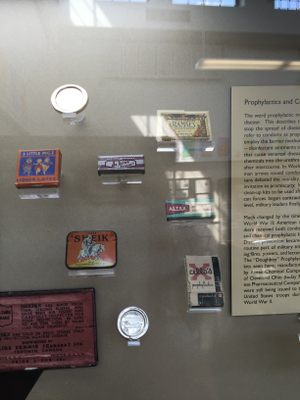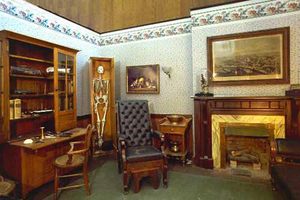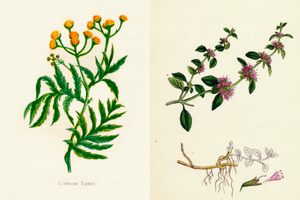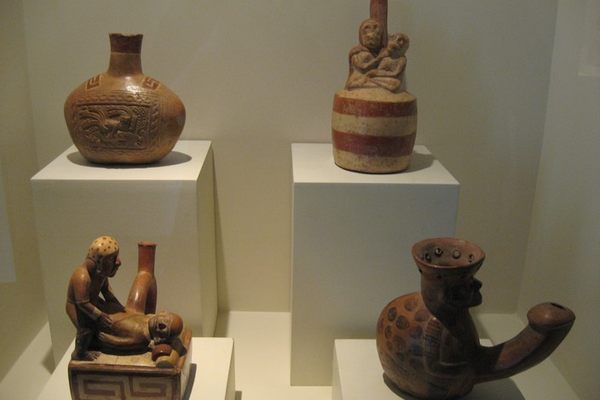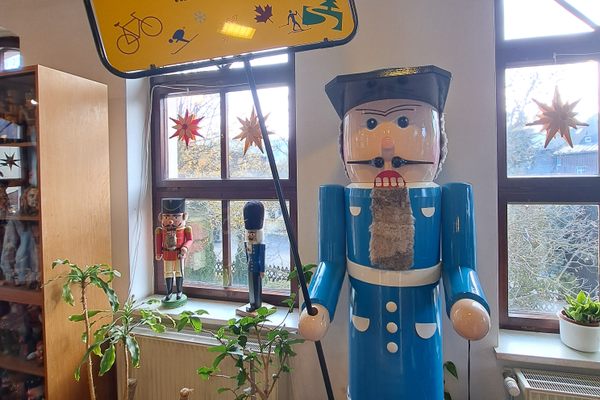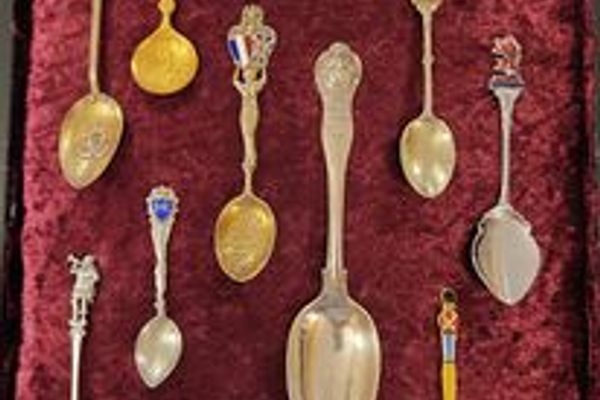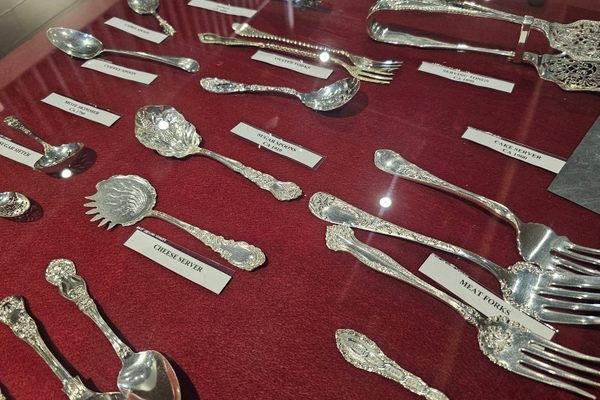About
Taking up a large gallery in the Dittrick Museum of Medical History at Case Western Reserve University is the largest, most comprehensive collection of historical contraceptives in the world. Showcasing more than one thousand items, the exhibit makes plain the extremes that humans will go to in order to prevent pregnancies, no matter how strange, or painful, as long as they don't have to stop having sex.
The museum contains a collection of beaver testicles, cat bones, crocodile dung, ear wax from a mule, spider carcasses, deer skins, Mexican yams, formaldehyde powder, Goodyear Tire rubbers, rhythm beads, seed wool, dates, honey, sponges, diaphragms, loops, pills, and IUDs, all displayed in a chronological tribute to human attempts to control fertility over the past 1,000-plus years. The exhibit also explores quite dangerous methods of contraception such as douching with Lysol or eating poisonous herbs like pennyroyal.
Most of these contraceptive oddities were driven by desperation rather than medical knowledge. They do, however, confirm the depth of imagination of human beings, especially when inspired by that timeless muse known as sex.
The exhibit also includes ancient texts, such as notes from the journals of Casanova, the famous 18th-century Italian libertine, who recommended that his lovers insert a half-lemon with the juice extracted as a cervix cover. (This method has some actual scientific backing and a study by Roger Short suggests the lemon's acidity is actually quite effective as a spermacide.)
More texts, dating to 1580 BCE suggest grinding dates, acacia, and honey to coat the vulva. The Biblical description of "spilling seed," or withdrawal, has its place, as do calendar methods of measuring safe periods for copulation without conception such as the the Knaus–Ogino Method, rhythm method, and Standard Days Method. (The failure rate of such methods being 25 percent per year, and even more so when imperfectly practiced.)
The museum was created primarily as a "doctor's museum," conceived by Canadian pharmacy executive Percy Skuy to document a medical past for physicians, but because of it's universally appealing topic, it quickly made its way to the public domain.
Related Tags
Community Contributors
Added By
Published
October 12, 2010
Sources
- Case Western Reserve University: Virtue, Vice, & Contraband: http://www.case.edu/affil/skuyhistcontraception/
- Pittsburgh Post-Gazette: "Dittrick Medical History Center in Cleveland pays tribute to history of contraceptives" (September 2010): http://www.post-gazette.com/pg/10255/1086553-51.stm
- AlterNet: The Contraception Museum: http://www.alternet.org/rights/22062/



